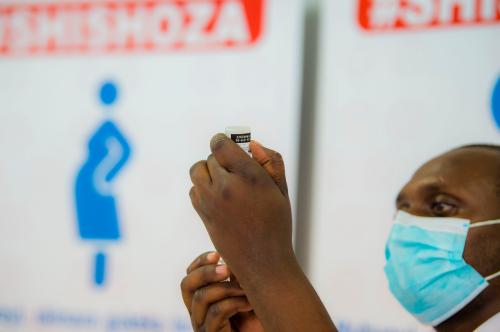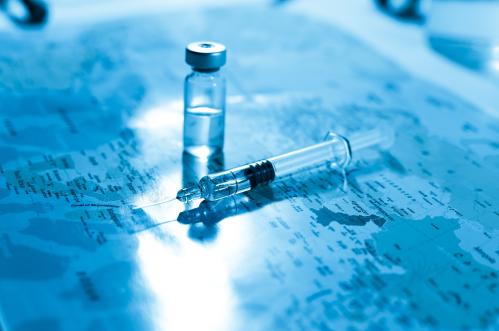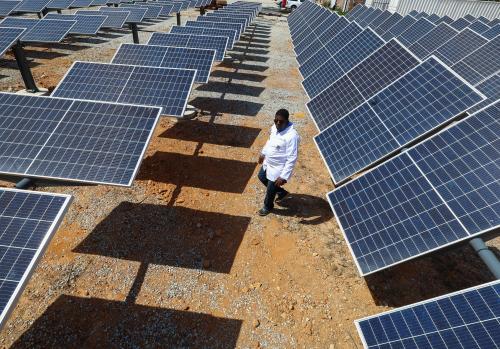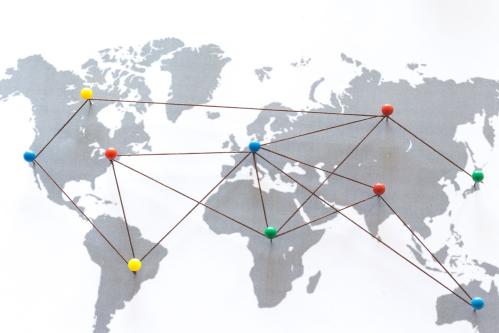Africa relies heavily on imported pharmaceutical goods to support the region’s health care needs: As of 2019, as much as 70 to 90 percent of the drugs consumed in sub-Saharan Africa’s estimated $14 billion pharmaceutical market were imported. Moreover, Africa represents nearly 25 percent of global demand for vaccines but produces only 0.1 percent of the world’s vaccines. Within Africa, 99 percent of vaccine doses are imported, and, of the 1 percent (12 million doses) produced domestically, most are relegated to the final fill-and-finish steps.
As of 2019, the continent possessed roughly 375 pharmaceutical manufacturers, as compared to about 5,000 and 10,500, respectively, in China and India. Africa sources more than 75 percent of its pharmaceutical imports from the European Union, India, and China (Figure 1). Although the United States is the world’s third-largest exporter of pharmaceuticals by value, the U.S. represents only 4.4 percent of drug imports to Africa.
When it comes to exports, Africa’s pharmaceuticals tend to stay within the region. As shown in Figure 1, more than half of exported pharmaceutical goods are destined for East and southern Africa. A small share of African pharmaceuticals is exported outside the region, mostly to the European Union, Yemen, and the United States.
Figure 1. Africa’s trade in pharmaceuticals (2017-2019)
 Source: “Foresight Africa: Top Priorities for the Continent in 2021, Chapter 5: Continental Integration: Uniting a revitalized Africa,” The Brookings Institution, 2021.
Source: “Foresight Africa: Top Priorities for the Continent in 2021, Chapter 5: Continental Integration: Uniting a revitalized Africa,” The Brookings Institution, 2021.
As nations compete to procure COVID-19 vaccines, the pandemic is exposing the risks of the continent’s reliance on foreign sources of pharmaceutical products. But new developments may improve vaccine access on the continent. Leading vaccine manufacturers, such as Moderna and BioNTech, have signed deals and are in the planning stages to build facilities in Africa that will produce the drug substance for mRNA vaccines—for COVID-19 and other diseases—in addition to vial filling. The nascent shift toward producing vaccines in Africa aligns also with the African Union and African Centers for Disease Control and Prevention’s goal to produce 60 percent of Africa’s vaccine needs locally by 2040.
For more on vaccines and health care in Africa, read “Accelerating COVID-19 vaccinations in Africa,” ”Africa must produce its own vaccines,” and “Globalizing the COVID vaccine.”






Commentary
Figure of the week: Africa’s trade in pharmaceuticals
December 9, 2021